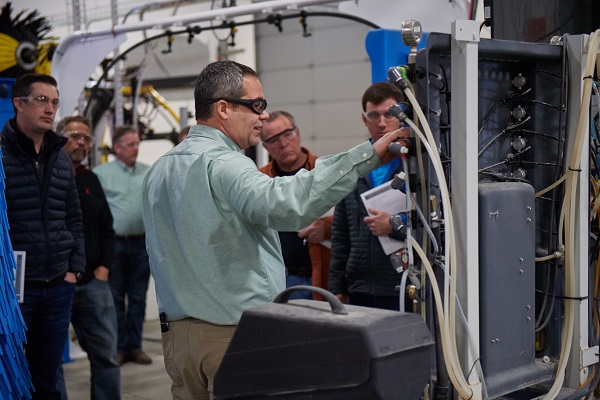Equipment breaks down. It’s an expensive reality. However, having unsafe conditions while car wash equipment is being fixed or undergoing maintenance is even more costly.
An accident or injury while equipment is being fixed can cost your operation. While the injured workers may be able to receive compensation for a workplace injury, you will be down a knowledgable and valuable employee. This may mean overtime for existing employees covering shifts and costs associated with training others how to fix and maintain equipment.
It’s important to know and implement best safety practices during all aspects of a car wash, but especially while fixing, cleaning, and maintaining equipment. Below are three proven principles to hang onto those precious pretty pennies, while keeping everyone happy and safe.
1. Attitude of Protection
Your employees are your greatest asset. While it may be easy to push off something that is just viewed as a requirement of the government, it’s much harder to leave something for another day when you believe that doing so could result in hurting someone else. When you look at safety as a way to protect your team, the procedures below will quickly move up the priority list.
Communicate: It’s easy to forget to pass on information that may be obvious to you, but it pays to do so. If employees are not aware of potential hazards, it will be more difficult to implement them while fixing or maintaining car wash equipment. Signs, safety sheets, and training are simple steps that will keep employees safe. Setting up periodic training and refresher courses for all employees, especially those who work directly with equipment, is worth it.
Training and Authorization: Those who work directly with equipment and chemicals need proper authorization as well. Do not allow those without qualifications to work with potentially hazardous equipment. Employees need to know what personal protective equipment to use; what safety measures to put in place before, during, and after working on equipment; the proper tools for the job; what steps to take if there’s an accident or injury; etc., before they attempt to fix equipment.
Clothing: What a worker puts on before working on equipment may not seem important to safety, but clothes that make them hard to see or that are baggy can be a safety hazard. Updating your clothing standards is an easy step to avoiding potential disasters.
Falling Hazards: Be aware of the accumulation of soap, wax or other solutions on the floor. These may cause workers to slip or cause injury if employees operate faulty electrical equipment while standing on a wet floor. Also, make sure that ladders are in proper condition to hold the weight of employees and that they are tall enough to complete the job while keeping the worker safe.
Physical Strains: Ensure that the people who work on or clean your equipment know proper lifting techniques. Good posture while lifting will reduce workplace injuries.
2. Be Mindful of Hazards
LOTO: Safety begins with an awareness of surroundings. If workers are unaware of why equipment is shut down, they could make mistakes that would get others injured. That’s why “lockout/tagout” (LOTO) procedures are so important. When a worker is fixing or cleaning equipment, the car wash should be locked down so it’s inoperable. Only the person who locks the equipment should be the one to unlock it. This ensures that no one turns the equipment back on while a worker may be in harm’s way.
Electrical equipment: Ensure that your workers always use the right tool for the job required. Manufacturer guidelines and training from your vendor can help.
Also, a nasty electric shock could accompany those who handle electrical equipment with wet hands or while standing on a wet floor. Be sure that cords are doubled insulated and that there are no splices or exposed wires.
Chemical Hazards: Due to the high concentration of its nature, cleaning chemicals used at car washes can be caustic. Before beginning to fix equipment holding chemicals, workers should be familiar with the Material Safety Data Sheet (MSDS) and know what to do if there is a spill. Also, proper personal protective equipment, such as gloves, goggles or face shields should be worn while handling hazards chemicals.
Post signs about hazards and train workers thoroughly. In the event that chemicals come in contact with eyes or skin, workers need to know where to go to rinse off the chemical. Have a wash station or a hose with normal water pressure readily available to rinse chemicals off as soon as possible.
3. Constant Vigilance
Walkthroughs: Taking time for an observant stroll through and around your area of business could mean the difference between fixing a potentially hazardous situation before an incident occurs or paying the big bucks afterward. Look for things on your walkthroughs such as loose cords or cords with exposed wires, equipment not locked into place, proper lighting of work areas, and signs that weather or other factors are creating potential hazards.
Catching potential hazards before workers begin fixing equipment is an easy step to keeping employees safe and the car wash running smoothly. Keep records of your walkthroughs for future reference.
While it may be impossible to prevent all accidents and injuries at a car wash, it is probable that most can be stopped before they start. These three proven principles are great tools to get you started. The International Car Wash Association has many more resources that can help you as well.

